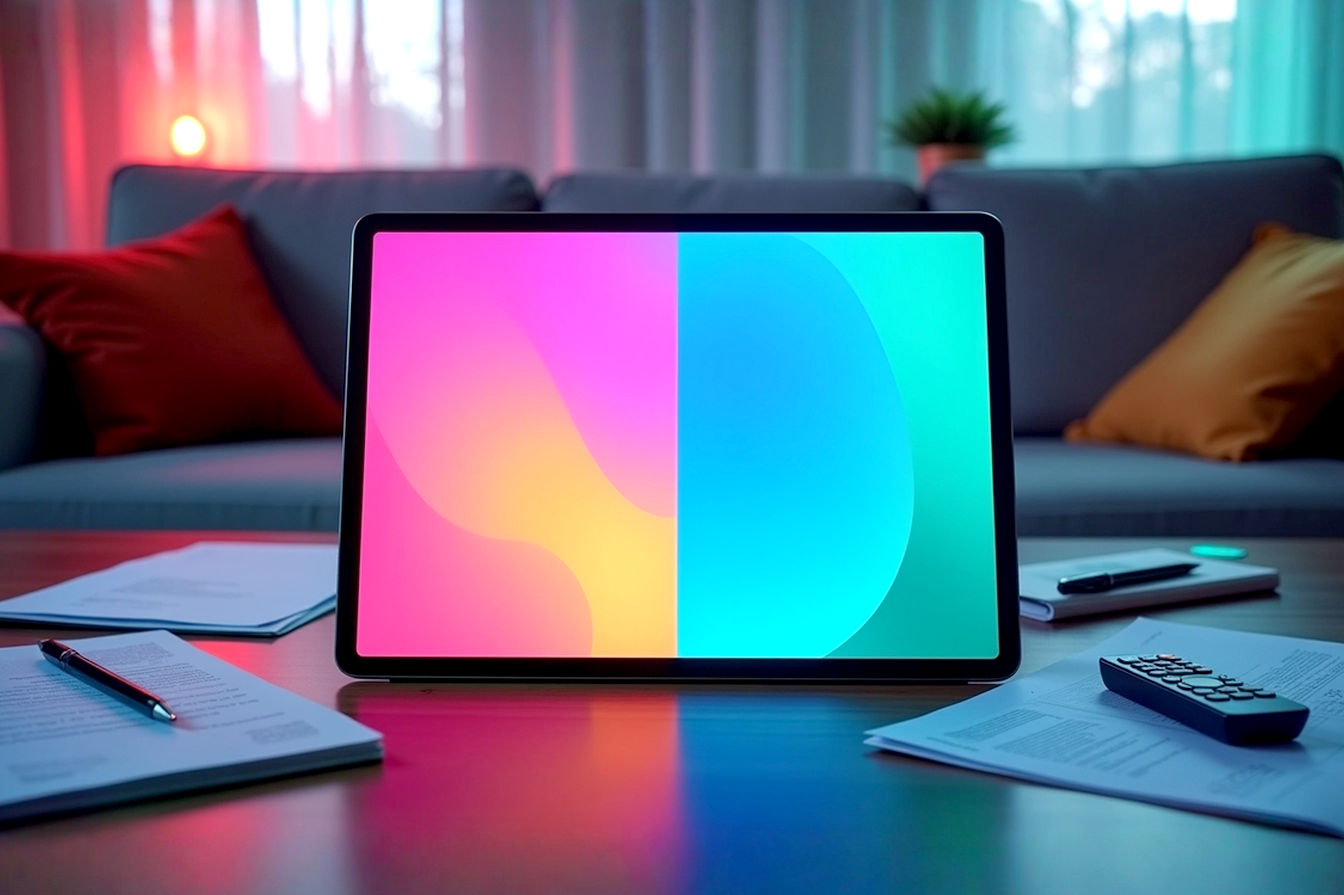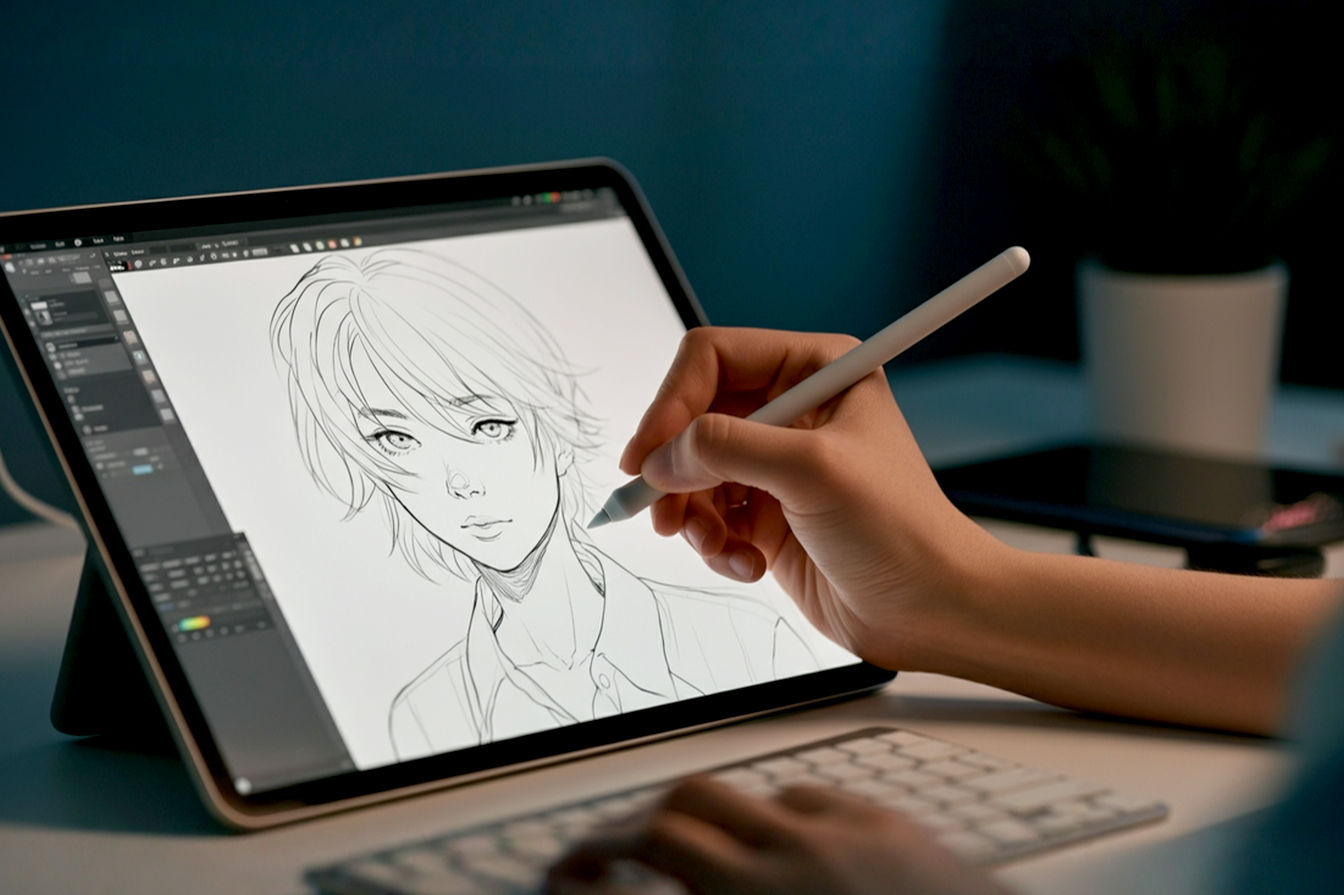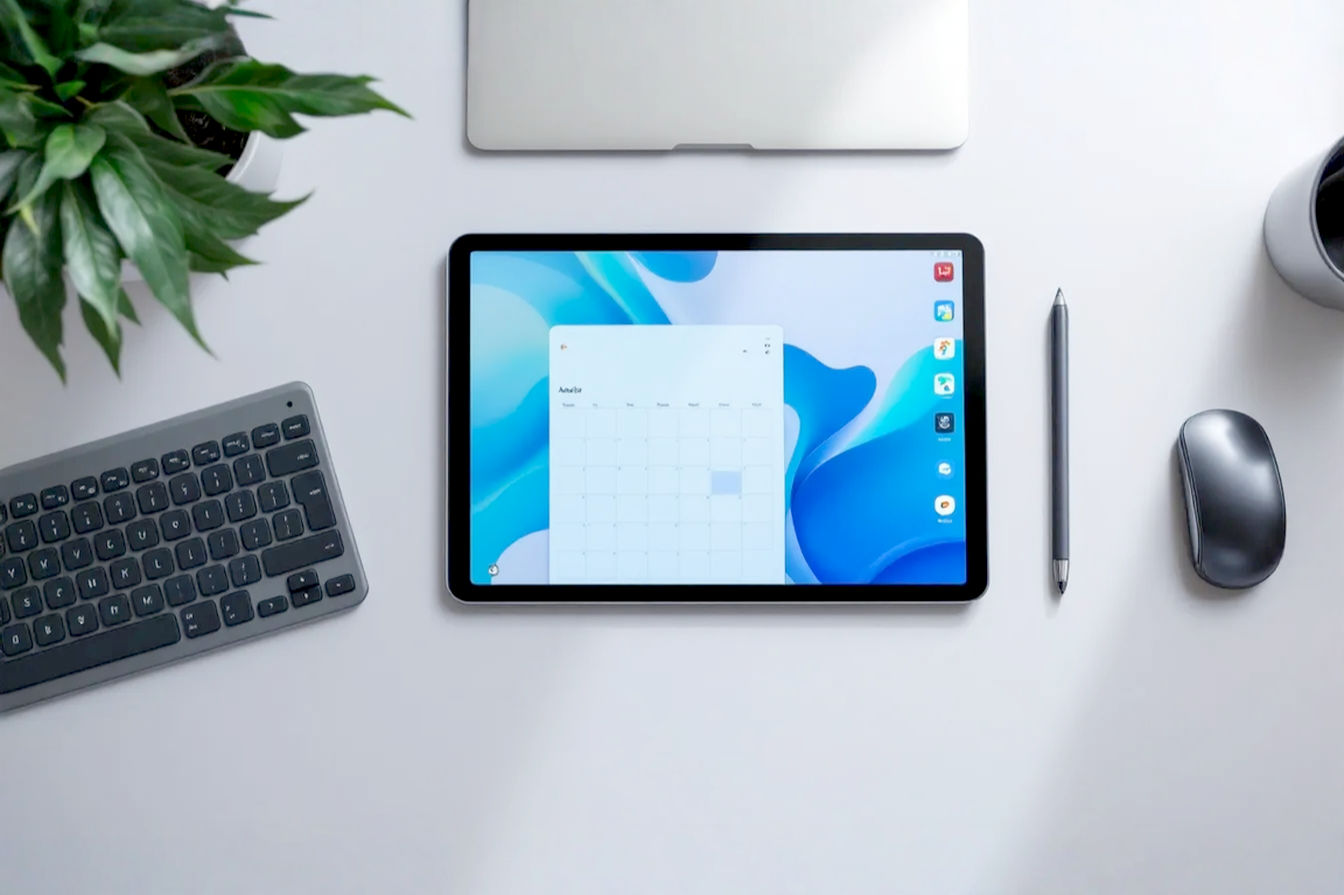This post may contain affiliate links. If you make a purchase through these links, we may earn a commission at no additional cost to you.
Have you ever looked at a tablet screen and felt like something was just… off? Maybe fast action in a movie seemed a little blurry, or scrolling through a webpage felt less smooth than you expected? You might not have realized it, but the screen’s refresh rate could be the culprit. While many tablets still use a standard 60Hz display, a growing number are adopting a technology that can make a dramatic difference: a 120Hz refresh rate. This isn’t just a minor spec bump; it’s a secret ingredient that can genuinely transform how vibrant videos look and how incredibly fluid games feel.
Imagine watching a high-octane action scene where every explosion and rapid movement is crystal clear, or playing a fast-paced game where your input feels instantly connected to the action on screen. That’s the power of a higher refresh rate at work. It’s a technical detail that has a very real, noticeable impact on your visual experience. This article will pull back the curtain on 120Hz tablet displays, explaining exactly what this technology is, how it achieves its stunning effects, why it’s particularly beneficial for watching videos and playing games, and what you should look for if you’re considering making the upgrade. Get ready to discover the secret that makes your media truly amazing.
Understanding Refresh Rate: The Basics
Before we dive into the magic of 120Hz, let’s get a solid grasp on what refresh rate actually means. It’s a fundamental concept in how displays work, but it’s often misunderstood or overlooked.
What is Refresh Rate
At its core, refresh rate tells you how many times per second a display can draw a new image. Think of it like flipping through a physical flipbook. Each page is a slightly different image, and the faster you flip, the smoother the animation appears. A display works similarly, but instead of physical pages, it’s updating the pixels on the screen.
The unit for refresh rate is Hertz (Hz), which simply means “cycles per second.” So, a display with a 60Hz refresh rate updates the image on the screen 60 times every second. A 120Hz display updates it 120 times per second. This might sound like a small difference, but doubling the number of updates per second has profound implications for how motion is perceived.
To get a bit more technical, the display controller constantly sends new data to the individual pixels on the screen, telling them what color and brightness to be. The refresh rate dictates how often this entire process of updating all the pixels can happen. A higher refresh rate means the display can accept and show new frame data more frequently.
The Standard: 60Hz Explained
For many years, 60Hz was the standard refresh rate for most screens, including computer monitors, TVs, and tablets. There were several reasons for this. Historically, 60Hz aligned well with standard video broadcast formats (like NTSC in North America, which used 60 fields per second) and power line frequencies in many regions. Display technology was also less capable of reliably refreshing much faster while remaining affordable.
A 60Hz refresh rate is perfectly adequate for many tasks. When you’re reading static text, browsing photos, or watching video content that is itself 30 frames per second or less, 60Hz works just fine. Your eyes and brain don’t need the screen to update more rapidly than that to perceive a stable, clear image in these scenarios.
However, the limitations of 60Hz become apparent when there’s significant motion on the screen. This is particularly true in fast-paced video content, scrolling quickly through content, or most notably, in video games. When objects move rapidly across a 60Hz screen, your eyes can perceive the gaps between the updates. This can manifest as motion blur, stuttering, or a general lack of clarity during movement. While our brains are good at filling in the blanks, a faster refresh rate provides more “blanks” to fill, resulting in a smoother, more continuous visual experience.
Introducing 120Hz: Doubling the Updates
Entering the scene is the 120Hz refresh rate, which, as the name suggests, updates the screen image 120 times every second. This is twice as many updates as a standard 60Hz display. The immediate theoretical benefit is clear: with twice the information being displayed in the same amount of time, motion should appear significantly smoother and clearer.
Think back to the flipbook analogy. A 60Hz flipbook has 60 pages for one second of animation. A 120Hz flipbook has 120 pages for that same second. When you flip the 120-page book, the animation looks much more fluid and detailed because the steps between each image are smaller.
This increased update rate provides the display with more opportunities to show the very latest information. If an object is moving across the screen, a 120Hz display can show its position at 120 different points within a second, compared to only 60 points on a 60Hz display. This ability to display more intermediate steps in motion is the fundamental reason why 120Hz screens look smoother. It allows the display to keep up better with fast-moving content, whether that content is a video game rendering 90 frames per second or simply you swiping your finger across the home screen.
The Science Behind the Smoothness: How 120Hz Works
While the concept of updating the screen more often seems simple, the actual science behind why it results in a smoother image involves a few interconnected factors. It’s not just about the refresh rate number itself; other display characteristics play a crucial role in realizing the full potential of 120Hz.
Pixel Response Time vs. Refresh Rate
It’s important not to confuse refresh rate with pixel response time, though they are related and both impact motion clarity. We know refresh rate is how often the screen can update. Pixel response time, typically measured in milliseconds (ms), is how quickly a single pixel can change from one color to another (often measured from gray to gray, or black to white to black).
For a display to effectively show a new image at a high refresh rate, the pixels need to be able to change to their new color state before the next refresh cycle begins. If the pixel response time is too slow, the pixels might not finish transitioning to the correct color for the current frame before the display is ready to draw the next frame. This lag in pixel transition leads to artifacts like “ghosting,” where you see a trail or smear behind moving objects because the pixels haven’t fully updated yet.
A display with a fast refresh rate but slow pixel response time won’t look as good during motion as a display with both a fast refresh rate and fast pixel response time. The ideal scenario for crisp motion is a high refresh rate combined with a low pixel response time. Modern tablet displays, especially those designed for 120Hz, typically have response times fast enough to keep up, often in the single-digit millisecond range. This ensures that when the display is ready to show a new image, the pixels can actually make the necessary changes quickly enough to display it accurately.
Motion Blur and Ghosting
Motion blur is a common visual issue on displays, particularly when fast objects move across the screen. Part of what we perceive as motion blur is due to the display itself, and part is due to how our eyes and brain work (persistence of vision).
On a standard 60Hz display, each frame is held on the screen for about 16.6 milliseconds (1 second / 60 frames). If an object is moving quickly, its position changes significantly during that 16.6ms that the frame is being displayed. Our eyes track the object, but the static image on the screen doesn’t match our eye movement perfectly, leading to a blurred perception.
A 120Hz display helps combat this by reducing the time each frame is held on screen to about 8.3 milliseconds (1 second / 120 frames). Since each frame is displayed for a shorter duration, the object’s position changes less within the time the frame is shown. This results in less discrepancy between where our eyes are tracking and where the object is on the screen at any given moment, significantly reducing the apparent motion blur.
Ghosting, as mentioned earlier, is specifically caused by slow pixel response times. If pixels take too long to change color, you see a faint “ghost” of the previous image trailing behind the moving object. While not directly a function of refresh rate, displays designed for 120Hz often use display technologies (like fast-switching LCD variants or OLED) and overdrive techniques to ensure pixel response times are low enough that ghosting is minimized, allowing the high refresh rate to truly shine.
Input Lag: Connecting Your Actions to the Screen
Input lag is the delay between performing an action (like touching the screen or pressing a button in a game) and seeing the result of that action on the display. This delay is a combination of several factors: the time it takes for the touch input to be registered, the time for the processor to process the action, the time for the graphics chip to render the next frame, and finally, the time for the display to show that new frame.
While a display’s refresh rate doesn’t directly affect the processing or rendering time, a higher refresh rate can reduce the display latency component of input lag. On a 60Hz display, you might have to wait up to 16.6ms for the display to be ready to show the new frame that includes your action. On a 120Hz display, the maximum wait is cut in half to 8.3ms.
This reduction in display latency makes the tablet feel more responsive. When you’re drawing with a stylus, the digital “ink” appears almost instantly under the tip. When you tap a button in an app, the visual feedback feels immediate. And critically, in games, the time between pressing a jump button and seeing your character jump is reduced. While the overall input lag includes other factors, the lower display latency contributed by a 120Hz screen is a noticeable improvement that makes interactions feel snappier and more direct.
Why 120Hz is a Game Changer for Gaming
For many users, the most compelling reason to choose a tablet with a 120Hz display is the significant improvement it brings to mobile gaming. Games are inherently dynamic and often feature rapid motion, making them the perfect showcase for the benefits of a higher refresh rate.
Smoother Gameplay: Seeing Every Frame
In video games, the graphics processing unit (GPU) renders a series of images, or frames per second (FPS). On a standard 60Hz display, even if the GPU is rendering 100 FPS, the screen can only show a maximum of 60 unique images per second. This mismatch can lead to visual artifacts like screen tearing (where the display shows parts of multiple frames at once, creating a jagged line) and stuttering (where the game’s smooth output is interrupted by the display waiting for its next refresh cycle).
A 120Hz display can sync up with games running at higher frame rates (up to 120 FPS), allowing you to see many more of the frames the GPU is actually producing. This results in gameplay that looks dramatically smoother. When you quickly pan the camera in a first-person shooter or race around a corner in a racing game, the environment remains much clearer and more detailed. You can track fast-moving opponents or obstacles with greater precision.
This isn’t just about looking pretty; it can provide a tangible competitive advantage. Being able to see a fast-moving target more clearly or react fractions of a second faster because the latest game state is displayed sooner can make the difference between winning and losing in competitive titles.
Reduced Motion Sickness
For some individuals, playing games or even just experiencing fast motion on a screen can induce motion sickness. This is often attributed to a mismatch between the visual information the eyes are receiving and the sense of motion (or lack thereof) felt by the inner ear.
While not a guaranteed cure, the smoother motion provided by a 120Hz display can help alleviate motion sickness for some users. The more fluid and less jarring visual updates reduce the cognitive disconnect that can trigger symptoms. By presenting a more continuous and natural representation of movement, the display helps the brain reconcile the visual input with the lack of physical motion. This is a less commonly discussed benefit, but a significant one for those who suffer from this issue.
Specific Game Genres That Benefit Most
While any game will look smoother on a 120Hz display compared to 60Hz, certain genres benefit more dramatically due to their emphasis on speed and quick reactions.
- First-Person Shooters (FPS): Absolutely benefit the most. Rapid aiming, quick turns, and tracking fast-moving enemies are all improved by the clarity of 120Hz. Games like Call of Duty Mobile or PUBG Mobile feel significantly more responsive.
- Racing Games: High speeds and constantly changing environments are perfect for showcasing 120Hz. The track ahead remains clearer, and reacting to turns and other cars feels more intuitive.
- Action Games: Any game with fast combat, quick character movement, or dynamic camera work will feel much more fluid and immersive.
- Even Slower-Paced Games: While the competitive edge might not be there, even turn-based RPGs or puzzle games feel nicer to interact with. Scrolling menus, character animations, and interface elements all benefit from the underlying smoothness.
The Role of Frame Rate (FPS)
It’s crucial to understand that a 120Hz display doesn’t create more frames; it can only display up to 120 frames per second. To fully utilize a 120Hz screen in gaming, the tablet’s hardware (specifically the GPU) needs to be powerful enough to render the game at a high frame rate, ideally consistently above 60 FPS, and ideally pushing towards 120 FPS in lighter titles.
If a game is only running at 40 FPS due to hardware limitations, a 120Hz screen will still look smoother than a 60Hz screen running the same game at 40 FPS (due to reduced display latency and cleaner frame presentation), but you won’t experience the full 120 FPS buttery smoothness. The display might show each frame multiple times to match the refresh rate, but it can’t show frames that the GPU hasn’t rendered.
Many modern high-end tablets with 120Hz displays also feature powerful processors capable of running many popular mobile games at frame rates well above 60 FPS, allowing the 120Hz screen to truly shine. Technologies like V-Sync (Vertical Synchronization), which helps the GPU sync its frame output with the display’s refresh rate to prevent tearing, are also relevant here, though modern adaptive sync technologies (discussed later) offer a more dynamic solution.
Elevating Your Video Watching Experience with 120Hz
While the benefits of 120Hz for gaming are often the most talked about, this technology also significantly enhances the experience of watching videos, even though most video content isn’t produced at 120 frames per second.
Beyond the Frame Rate: Smooth Motion for Movies & Shows
Most movies and TV shows are filmed and distributed at 24 frames per second (FPS). Other content, like many TV broadcasts and online videos, uses 30 FPS or 60 FPS. A common question is: how does a 120Hz display improve video that’s only 24 or 30 FPS?
The key lies in how the display handles the frame rate conversion. A 60Hz display struggles to display 24 FPS content smoothly because 60 is not an even multiple of 24. To show 24 frames in one second, a 60Hz display typically uses a technique called “3:2 pulldown,” displaying alternating frames for three refresh cycles, then two. This results in a slight, but often noticeable, stutter or “judder” in motion, especially during slow panning shots.
A 120Hz display, however, is a perfect multiple of 24 (120 / 24 = 5). This means it can simply display each frame of 24 FPS content five times per second. This “5:5 pulldown” results in incredibly smooth, judder-free playback of standard film content. The motion appears much more natural and cinematic, free from the slight hitches you might see on a 60Hz screen. Similarly, for 30 FPS content, a 120Hz display can show each frame four times (120 / 30 = 4), also resulting in smoother motion than a 60Hz display.
So, even if the video itself is low frame rate, a 120Hz display’s ability to handle that content cleanly makes a noticeable difference in motion fluidity and overall viewing comfort.
Watching High Frame Rate (HFR) Content
While 24 FPS remains the standard for most cinematic content, there’s a growing trend towards High Frame Rate (HFR) video. Films like “The Hobbit” trilogy experimented with shooting and displaying at 48 FPS. Some documentaries, sports broadcasts, and online videos are also produced at 60 FPS or even higher.
To watch HFR content as it was intended, you need a display capable of refreshing at that rate or higher. A 60Hz display can show 60 FPS content natively, but anything above that will be displayed at a lower, choppy frame rate. A 120Hz display is perfectly equipped to handle 48 FPS (by displaying each frame 2.5 times, or using frame interpolation) and 60 FPS content smoothly, and is ready for content produced at even higher frame rates up to 120 FPS should it become more common in the future.
Watching HFR content on a 120Hz screen provides an almost hyper-realistic sense of motion. While some viewers find HFR in movies takes some getting used to, its benefits for fast-moving subjects like sports are undeniable, offering incredible clarity and detail during intense action.
Scrolling and Interface Smoothness
Beyond dedicated video and gaming, one of the most immediately noticeable benefits of a 120Hz display is the improvement in everyday tablet use. Simple actions like scrolling through webpages, swiping between home screens, opening and closing apps, and navigating menus all feel dramatically smoother and more responsive.
On a 60Hz screen, you can often perceive the individual steps as content scrolls past. On a 120Hz screen, the scrolling is so fluid it looks like the content is gliding effortlessly under your finger. This isn’t just a minor aesthetic improvement; it makes the entire tablet experience feel faster, more polished, and more intuitive. Your eyes can more easily track the text or images as they move, reducing strain and making prolonged use more comfortable. This constant sense of fluidity contributes significantly to the premium feel of tablets equipped with this technology.
Adaptive Refresh Rate: The Best of Both Worlds
While running a display at a constant 120Hz provides maximum smoothness, it also consumes more power than running at a lower refresh rate. This is where adaptive refresh rate technology comes in, offering a smart solution to balance performance and battery life.
Introducing Adaptive Sync Technology
Adaptive sync technology allows the display to dynamically adjust its refresh rate on the fly to match the frame rate of the content being displayed. Instead of being locked at a fixed rate like 60Hz or 120Hz, the display can ramp its refresh rate up or down depending on what’s happening on screen.
If you’re reading a static webpage or looking at a still image, the content isn’t changing, so the display doesn’t need to update frequently. An adaptive refresh rate display can drop down to a very low refresh rate, sometimes as low as 10Hz or even 1Hz, significantly saving power. When you start scrolling, watching a video, or playing a game, the display instantly and seamlessly ramps its refresh rate up to match the demands of the content, potentially going all the way up to 120Hz.
The primary benefits of adaptive sync are improved battery efficiency without sacrificing smoothness when it’s needed, and reduced screen tearing in games by synchronizing the display’s updates with the GPU’s frame output.
Apple’s ProMotion Technology
Apple was one of the pioneers in bringing adaptive refresh rate to tablets with their “ProMotion” technology, first introduced on the iPad Pro line. ProMotion displays can dynamically adjust their refresh rate anywhere from 10Hz up to 120Hz.
This wide range allows the iPad Pro to be incredibly power-efficient when displaying static content, such as when you’re just looking at the home screen or reading an e-book. The display slows down to 10Hz, only updating when you interact with the screen. But the moment you start scrolling, drawing with the Apple Pencil, or launching a game, the refresh rate instantly jumps up to 120Hz, providing that signature buttery smooth experience.
ProMotion is a key reason why the iPad Pro feels so responsive and fluid, not just in demanding tasks but in everyday use. It intelligently delivers the benefits of 120Hz without the constant battery drain that a fixed 120Hz rate would entail. The implementation is seamless and largely invisible to the user, simply contributing to an exceptionally smooth and power-efficient experience.
Adaptive Sync on Android Tablets
Apple isn’t the only player using adaptive refresh rate. Many high-end Android tablets also feature similar technology, though it might be marketed under different names. Samsung, for example, uses “Dynamic AMOLED 2X” on some of its premium Galaxy Tab S series tablets, which includes adaptive refresh rate capabilities, often ranging from 10Hz or 11Hz up to 120Hz.
Other Android tablet manufacturers are also incorporating adaptive refresh rate features into their high-end models. The goals are the same as ProMotion: provide the benefits of a high refresh rate for smooth motion and responsiveness while optimizing power consumption by lowering the refresh rate when the content is static. The specific range of refresh rates and the smoothness of the transition can vary between manufacturers and models, but the underlying principle of dynamic adjustment is consistent.
Is 120Hz Worth It for You? Weighing the Pros and Cons
Now that we’ve explored what 120Hz refresh rate is and how it works, the big question remains: is it worth paying extra for a tablet with this feature? The answer depends heavily on how you plan to use your tablet.
The Advantages Summarized
Let’s quickly recap the key benefits of a 120Hz display:
- Smoother Visuals in Motion: This is the most obvious advantage. Anything that moves on the screen, from scrolling text to fast-paced game action, looks significantly more fluid and natural.
- Reduced Blur and Ghosting: By updating more frequently and often paired with faster pixel response times, 120Hz displays minimize the smearing and trailing artifacts seen on lower refresh rate screens during motion.
- More Responsive Feel: The lower display latency makes interactions like touching, swiping, and using a stylus feel snappier and more directly connected to the on-screen action.
- Better Gaming Experience: For mobile gamers, 120Hz provides a competitive edge, clearer motion, and a more immersive experience, especially in fast-action genres.
- Improved Video Playback: Even standard 24 FPS content looks smoother and free of judder, and High Frame Rate content can be displayed as intended.
Potential Downsides
While the benefits are clear, there are a few potential drawbacks to consider:
- Higher Cost: Tablets with 120Hz displays are typically premium devices and come with a higher price tag compared to models with standard 60Hz screens.
- Potential for Increased Battery Drain: Although adaptive refresh rate technology significantly mitigates this, running the display at a constant high refresh rate (if adaptive sync isn’t implemented or is disabled) will consume more power than running at 60Hz. However, with modern adaptive sync, the impact on overall battery life during mixed usage is often less dramatic than you might expect.
- May Require More Powerful Hardware: To fully benefit from 120Hz in demanding games, the tablet needs a powerful processor and GPU capable of rendering frames at high rates. A 120Hz screen paired with underpowered hardware won’t deliver the full potential smoothness in graphically intensive tasks.
- The Difference Might Be Less Noticeable for Some: If your primary tablet use involves reading e-books, browsing static websites, or using productivity apps without much scrolling, the difference between 60Hz and 120Hz might be less apparent to you. The benefits are most pronounced when there is significant motion on the screen.
Who Benefits Most?
Considering the pros and cons, certain types of users will benefit most significantly from a 120Hz tablet display:
- Gamers: If you play a lot of mobile games, especially fast-paced or competitive titles, a 120Hz screen is arguably the single biggest upgrade you can get for your visual experience.
- Frequent Video Watchers: If you watch many movies, TV shows, or online videos on your tablet, the smoother motion and judder-free playback of 24 FPS content will be a noticeable improvement.
- Users Who Value Overall Interface Fluidity: If you appreciate a tablet that feels incredibly responsive, smooth, and fast in every interaction, from scrolling to opening apps, 120Hz delivers a premium feel.
- Digital Artists Using Styluses: The reduced latency with a stylus on a 120Hz screen makes drawing and writing feel much more natural and closer to using pen and paper.
If you fall into one or more of these categories, the extra cost for a 120Hz display is likely a worthwhile investment that will genuinely enhance your tablet experience.
Finding a 120Hz Tablet: Key Specs to Look For
If you’ve decided that the benefits of a 120Hz display align with your needs, here’s what you should look for when shopping for a new tablet.
Checking the Refresh Rate Specification
The most obvious thing to check is the display specifications. Look for listings that explicitly mention “120Hz refresh rate.” Manufacturers often highlight this feature prominently.
Be aware of the terminology used. Apple calls their adaptive 120Hz technology “ProMotion.” Samsung uses terms like “Dynamic AMOLED 2X” for their high-end displays, which include adaptive 120Hz capabilities. Other manufacturers might simply state “120Hz” or “adaptive refresh rate.” Always check the detailed specifications or reliable reviews to confirm the exact refresh rate and whether it’s fixed or adaptive.
Display Type Matters (LCD vs. OLED)
While 120Hz refresh rate is the focus, the underlying display technology also plays a role in the overall visual quality and motion clarity. The two main types you’ll encounter are LCD (Liquid Crystal Display) and OLED (Organic Light-Emitting Diode).
- LCD: This technology uses a backlight to illuminate pixels. While LCDs can achieve 120Hz refresh rates, their pixel response times are generally slower than OLEDs. However, modern high-end LCDs designed for high refresh rates (like some IPS LCDs) have improved significantly and can offer excellent motion clarity.
- OLED: OLED pixels emit their own light and can be turned on or off individually. This allows for perfect blacks and incredibly high contrast ratios. Crucially for motion, OLED pixels typically have extremely fast response times, often measured in microseconds rather than milliseconds. This near-instantaneous pixel transition makes OLED displays exceptionally well-suited for high refresh rates, virtually eliminating ghosting and contributing to incredibly crisp motion.
Many premium tablets with 120Hz displays use OLED technology (like Samsung’s Galaxy Tab S series or some high-end iPads in the future, though current iPad Pros use high-quality LCDs with ProMotion). While a 120Hz LCD can still look fantastic, a 120Hz OLED will generally offer superior motion clarity due to its faster pixel response.
Processing Power (CPU/GPU)
As discussed earlier, a 120Hz display needs content to display at that rate to show its full potential, especially in games. Therefore, the tablet’s internal hardware is crucial. Look for tablets with powerful, recent-generation processors and capable graphics chips.
Check reviews and benchmarks to see how a tablet performs in demanding tasks like gaming. Does it maintain high frame rates in popular titles? A tablet with a powerful chip is more likely to consistently push frame rates high enough to take full advantage of the 120Hz display, providing the smoothest possible gaming experience. Even for general use, a faster processor contributes to the overall snappiness and responsiveness that complements the high refresh rate.
Battery Life Considerations
While adaptive refresh rate helps, it’s still wise to consider battery life. A display is one of the most power-hungry components in a tablet. Look for reviews that specifically test battery life under various usage conditions, including gaming and video playback, on models with 120Hz displays.
Manufacturers have become very good at optimizing power consumption with adaptive refresh rate technology, so the battery life difference compared to a 60Hz model might be less significant than you’d expect, especially during mixed usage. However, if you plan on extended gaming sessions at 120 FPS, expect the battery to drain faster than when performing less demanding tasks.
Examples of Tablets with 120Hz Displays
As of my last update, several tablet lines are known for featuring 120Hz or adaptive 120Hz displays:
- Apple iPad Pro: All recent generations of iPad Pro (since the 2nd generation 10.5-inch and 12.9-inch models) feature the ProMotion adaptive 120Hz display.
- Samsung Galaxy Tab S Series: Many recent high-end models in the Galaxy Tab S line, such as the Galaxy Tab S7, S8, S9, and their Plus/Ultra variants, feature Dynamic AMOLED 2X displays with adaptive 120Hz refresh rates.
- Other Manufacturers: Some other manufacturers are starting to include 120Hz displays in their premium tablet offerings. It’s always best to check the specific model’s specifications.
These examples represent some of the most prominent tablets where you can experience the benefits of a 120Hz refresh rate today.
Conclusion
The refresh rate of a tablet display might seem like a technical detail buried in a spec sheet, but as we’ve explored, a 120Hz refresh rate is far more than that. It’s a fundamental upgrade that genuinely impacts the visual experience, particularly for dynamic content like videos and games.
By updating the screen twice as often as a standard 60Hz display, 120Hz technology delivers noticeably smoother motion, reduces perceived motion blur and ghosting, and contributes to a more responsive feel in everyday interactions. For gamers, it provides a tangible advantage and a more immersive experience. For video enthusiasts, it ensures judder-free playback of standard content and allows for the enjoyment of emerging High Frame Rate media. And with the advent of adaptive refresh rate technologies like ProMotion and Dynamic AMOLED 2X, these benefits can be enjoyed without a significant compromise on battery life.
While tablets with 120Hz displays typically sit at the higher end of the market, for users who prioritize visual fluidity, gaming performance, and video quality, the investment is often well worth it. It’s a technology that, once experienced, is hard to go back from. If you spend a significant amount of time watching videos or playing games on your tablet, or if you simply value a device that feels incredibly fast and responsive, a 120Hz display is a secret ingredient that can truly make your mobile media consumption look and feel amazing.






